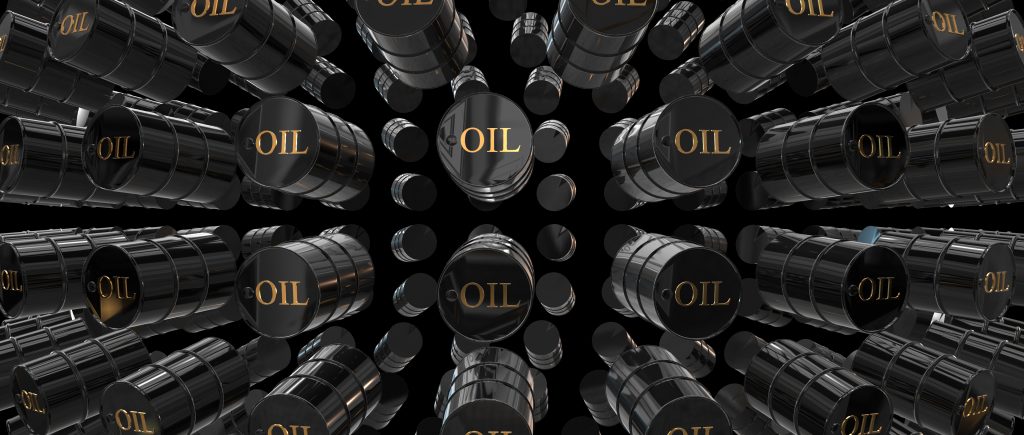Oil prices extended their losing streak to a fifth straight session on Wednesday, dropping to levels not seen since February 2021, as an escalating tariff war between the United States and China stoked fears of weakening global demand. At the same time, expectations of rising supply added further pressure to crude markets.
As of 06:55 GMT,
- Brent crude futures fell $1.39, or 2.21%, to $61.43 per barrel.
- U.S. West Texas Intermediate (WTI) crude dropped $1.50, or 2.52%, to $58.08.
Both benchmarks had earlier plunged as much as 4% before trimming some losses. Over the past five sessions, Brent and WTI have fallen sharply following U.S. President Donald Trump’s announcement of sweeping tariffs, which sparked fears of a global recession and a slump in fuel consumption.
Market Structure Signals Demand Worries
The Brent futures premium over its six-month forward contract shrank to 98 cents per barrel, its narrowest since mid-November. This backwardation spread—once as high as $3.53 on April 2—has collapsed as investors grow increasingly wary of softening near-term demand and the risk of excess supply.
“China’s aggressive retaliation diminishes the chances of a quick deal between the world’s two biggest economies, triggering mounting fears of economic recession across the globe,” said Ye Lin, VP of oil markets at Rystad Energy.
Trump’s 104% tariffs on Chinese imports took effect at 12:01 a.m. EDT on Wednesday, following through on threats made after China declined to remove its 34% retaliatory tariffs by the President’s imposed deadline.
Beijing hit back with strong rhetoric, accusing the U.S. of “blackmail” and refusing to bow to pressure, further dampening prospects of a near-term resolution.
Demand Outlook Weakens, Supply Set to Rise
China, the world’s second-largest oil consumer, faces risks to as much as 100,000 barrels per day (bpd) of oil demand growth if the trade conflict drags on, Ye Lin warned. While government stimulus could mitigate some of the losses, analysts remain cautious about the demand outlook.
Worsening the supply-demand balance, OPEC+ recently confirmed plans to increase output by 411,000 bpd starting in May. Analysts say the move could tip the market into surplus, especially if demand continues to weaken.
In response to these headwinds, Goldman Sachs revised its forecast:
- Brent could drop to $62 per barrel by December 2025, and to $55 by December 2026.
- WTI is seen falling to $58 and $51 in the same periods, respectively.
Meanwhile, Russia’s ESPO Blend crude slipped below the $60 per barrel Western price cap for the first time on Monday, highlighting further pricing pressure in physical markets.
U.S. Inventory Data Provides a Glimmer of Support
In a rare bullish signal, the American Petroleum Institute (API) reported a 1.1 million-barrel drop in U.S. crude inventories for the week ended April 4. That compares to analyst expectations for a 1.4 million-barrel build, suggesting demand may not be as weak as feared.
Markets now await official data from the U.S. Energy Information Administration (EIA), due Wednesday at 10:30 a.m. EDT (14:30 GMT), for confirmation.
As oil prices sink under the weight of trade uncertainty and rising supply, traders remain cautious. Unless global demand indicators show improvement or geopolitical tensions ease, crude markets may remain under pressure in the near term.
 Noor Trends News, Technical Analysis, Educational Tools and Recommendations
Noor Trends News, Technical Analysis, Educational Tools and Recommendations





